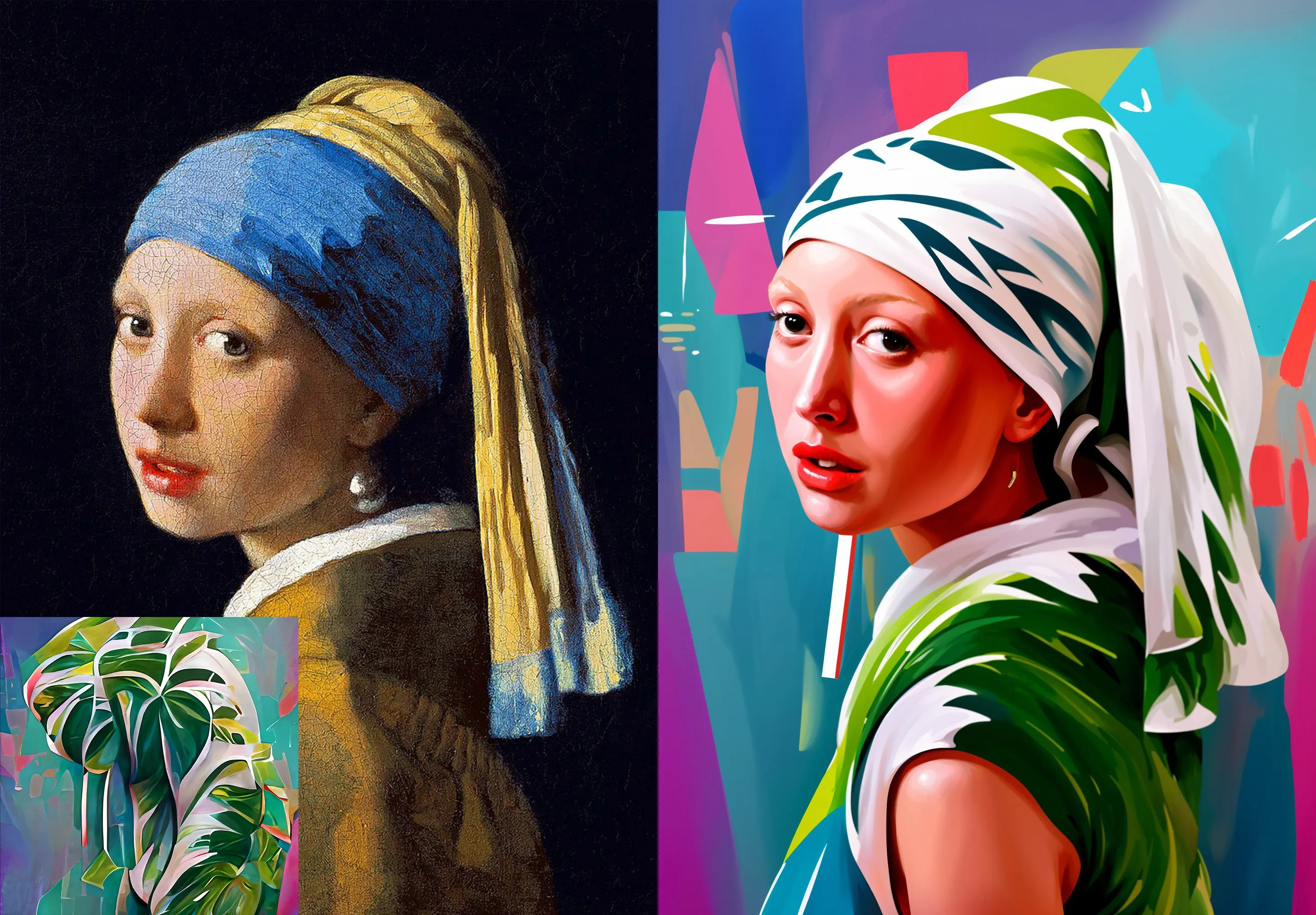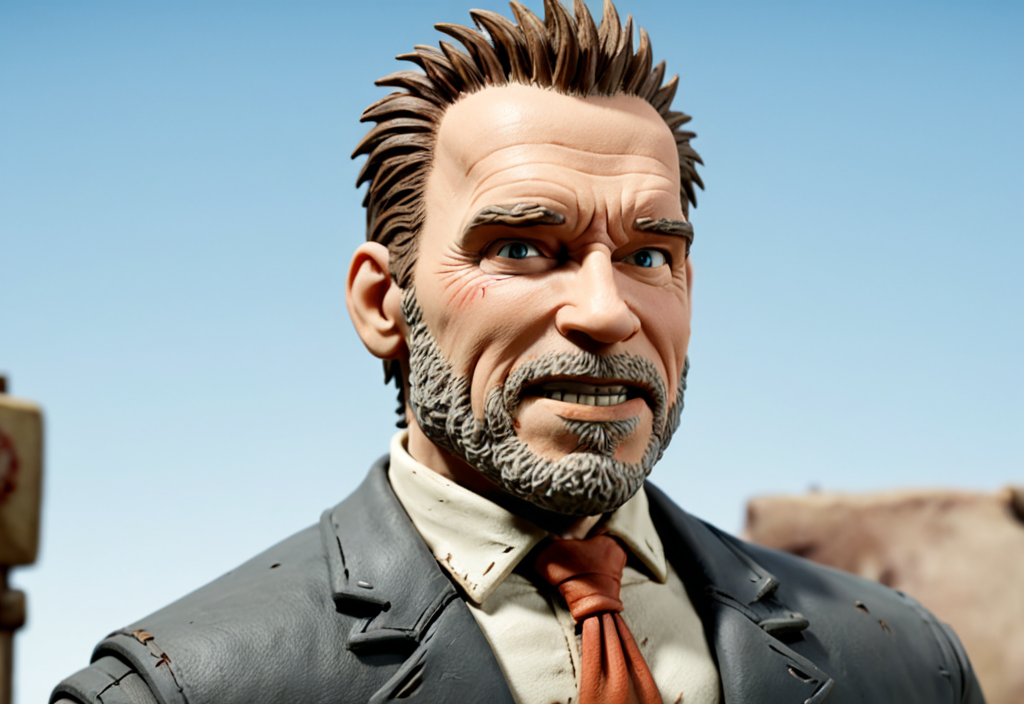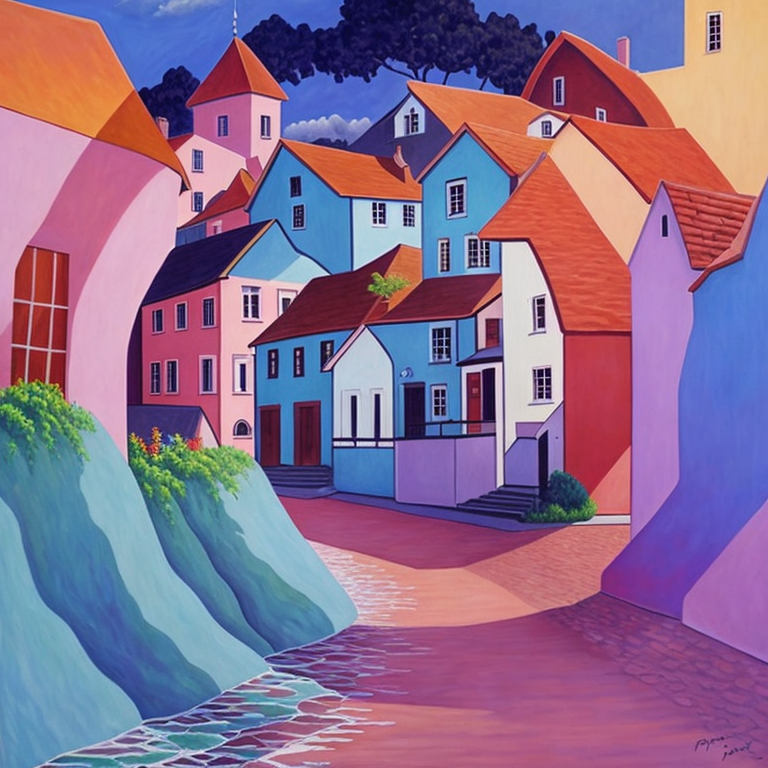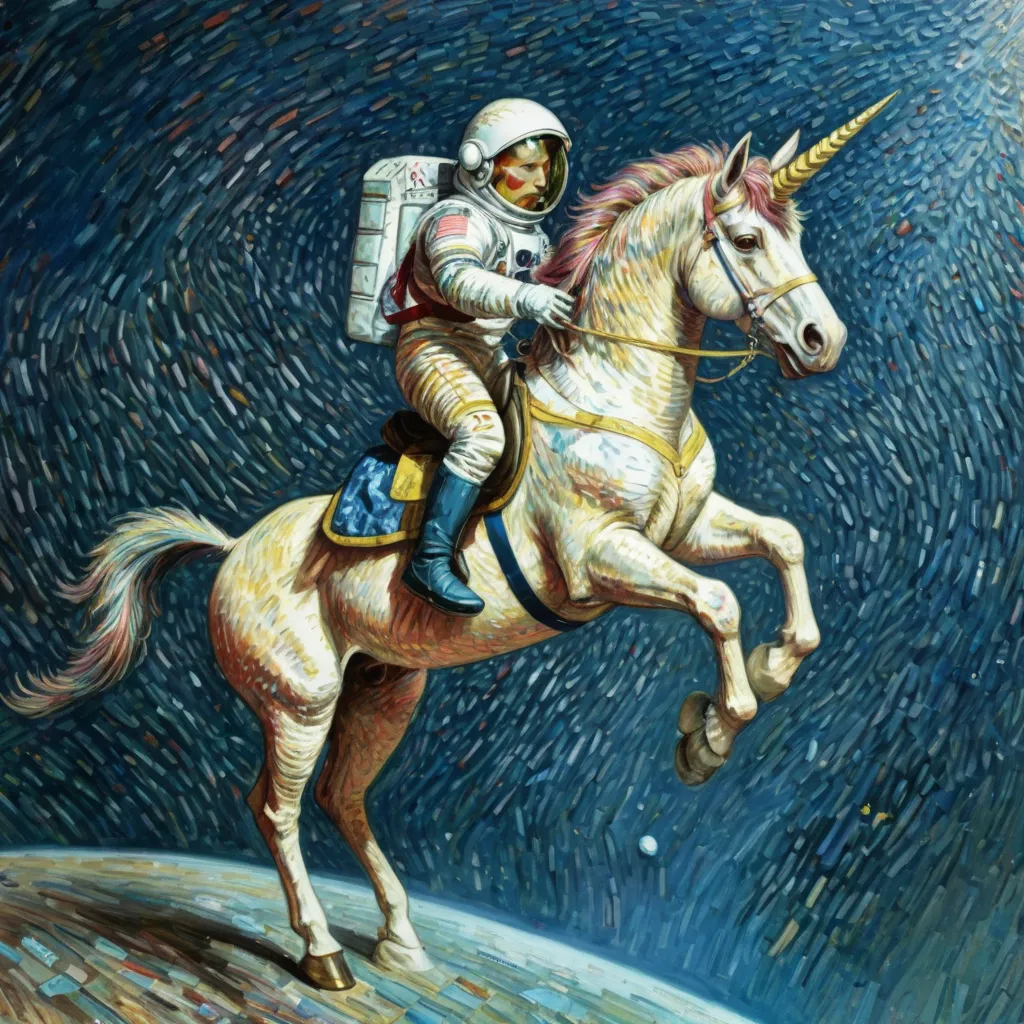become-image
Maintainer: fofr

261

| Property | Value |
|---|---|
| Model Link | View on Replicate |
| API Spec | View on Replicate |
| Github Link | View on Github |
| Paper Link | No paper link provided |
Create account to get full access
Model overview
The become-image model, created by maintainer fofr, is an AI-powered tool that allows you to adapt any picture of a face into another image. This model is similar to other face transformation models like face-to-many, which can turn a face into various styles like 3D, emoji, or pixel art, as well as gfpgan, a practical face restoration algorithm for old photos or AI-generated faces.
Model inputs and outputs
The become-image model takes in several inputs, including an image of a person, a prompt describing the desired output, a negative prompt to exclude certain elements, and various parameters to control the strength and style of the transformation. The model then generates one or more images that depict the person in the desired style.
Inputs
- Image: An image of a person to be converted
- Prompt: A description of the desired output image
- Negative Prompt: Things you do not want in the image
- Number of Images: The number of images to generate
- Denoising Strength: How much of the original image to keep
- Instant ID Strength: The strength of the InstantID
- Image to Become Noise: The amount of noise to add to the style image
- Control Depth Strength: The strength of the depth controlnet
- Disable Safety Checker: Whether to disable the safety checker for generated images
Outputs
- An array of generated images in the desired style
Capabilities
The become-image model can adapt any picture of a face into a wide variety of styles, from realistic to fantastical. This can be useful for creative projects, generating unique profile pictures, or even producing concept art for games or films.
What can I use it for?
With the become-image model, you can transform portraits into various artistic styles, such as anime, cartoon, or even psychedelic interpretations. This could be used to create unique profile pictures, avatars, or even illustrations for a variety of applications, from social media to marketing materials. Additionally, the model could be used to explore different creative directions for character design in games, movies, or other media.
Things to try
One interesting aspect of the become-image model is the ability to experiment with the various input parameters, such as the prompt, negative prompt, and denoising strength. By adjusting these settings, you can create a wide range of unique and unexpected results, from subtle refinements to the original image to completely surreal and fantastical transformations. Additionally, you can try combining the become-image model with other AI tools, such as those for text-to-image generation or image editing, to further explore the creative possibilities.
This summary was produced with help from an AI and may contain inaccuracies - check out the links to read the original source documents!
Related Models

face-to-many

12.1K
The face-to-many model is a versatile AI tool that allows you to turn any face into a variety of artistic styles, such as 3D, emoji, pixel art, video game, claymation, or toy. Developed by fofr, this model is part of a larger collection of creative AI tools from the Replicate platform. Similar models include sticker-maker for generating stickers with transparent backgrounds, real-esrgan for high-quality image upscaling, and instant-id for creating realistic images of people. Model inputs and outputs The face-to-many model takes in an image of a person's face and a target style, allowing you to transform the face into a range of artistic representations. The model outputs an array of generated images in the selected style. Inputs Image**: An image of a person's face to be transformed Style**: The desired artistic style to apply, such as 3D, emoji, pixel art, video game, claymation, or toy Prompt**: A text description to guide the image generation (default is "a person") Negative Prompt**: Text describing elements you don't want in the image Prompt Strength**: The strength of the prompt, with higher numbers leading to a stronger influence Denoising Strength**: How much of the original image to keep, with 1 being a complete destruction and 0 being the original Instant ID Strength**: The strength of the InstantID model used for facial recognition Control Depth Strength**: The strength of the depth controlnet, affecting how much it influences the output Seed**: A fixed random seed for reproducibility Custom LoRA URL**: An optional URL to a custom LoRA (Learned Residual Adapter) model LoRA Scale**: The strength of the custom LoRA model Outputs An array of generated images in the selected artistic style Capabilities The face-to-many model excels at transforming faces into a wide range of artistic styles, from the detailed 3D rendering to the whimsical pixel art or claymation. The model's ability to capture the essence of the original face while applying these unique styles makes it a powerful tool for creative projects, digital art, and even product design. What can I use it for? With the face-to-many model, you can create unique and eye-catching visuals for a variety of applications, such as: Generating custom avatars or character designs for video games, apps, or social media Producing stylized portraits or profile pictures with a distinctive flair Designing fun and engaging stickers, emojis, or other digital assets Prototyping physical products like toys, figurines, or collectibles Exploring creative ideas and experimenting with different artistic interpretations of a face Things to try The face-to-many model offers a wide range of possibilities for creative experimentation. Try combining different styles, adjusting the input parameters, or using custom LoRA models to see how the output can be further tailored to your specific needs. Explore the limits of the model's capabilities and let your imagination run wild!
Updated Invalid Date

face-to-sticker

1.1K
The face-to-sticker model is a tool that allows you to turn any face into a sticker. This model is created by the Replicate user fofr, who has also developed similar AI models like sticker-maker, face-to-many, and become-image. These models all focus on transforming faces into different visual styles using AI. Model inputs and outputs The face-to-sticker model takes an image of a person's face as input and generates a sticker-like output. You can also customize the model's output by adjusting parameters like the prompt, steps, width, height, and more. Inputs Image**: An image of a person's face to be converted into a sticker Prompt**: A text description of what you want the sticker to look like (default is "a person") Negative prompt**: Things you do not want to see in the sticker Prompt strength**: The strength of the prompt, with higher numbers leading to a stronger influence Steps**: The number of steps to take when generating the sticker Width and height**: The size of the output sticker Seed**: A number to fix the random seed for reproducibility Upscale**: Whether to upscale the sticker by 2x Upscale steps**: The number of steps to take when upscaling the sticker Ip adapter noise and weight**: Parameters that control the influence of the IP adapter on the final sticker Outputs The generated sticker image Capabilities The face-to-sticker model can take any face and transform it into a unique sticker-like image. This can be useful for creating custom stickers, emojis, or other graphics for social media, messaging, or other applications. What can I use it for? You can use the face-to-sticker model to create custom stickers and graphics for a variety of purposes, such as: Personalizing your messaging and social media with unique, AI-generated stickers Designing custom merchandise or products with your own face or the faces of others Experimenting with different visual styles and effects to create new and interesting graphics Things to try One interesting thing to try with the face-to-sticker model is to experiment with different prompts and parameters to see how they affect the final sticker. Try prompts that evoke different moods, emotions, or visual styles, and see how the model responds. You can also play with the upscaling and IP adapter settings to create more detailed or stylized stickers.
Updated Invalid Date

illusions

9
The illusions model is a Cog implementation of the Monster Labs' QR code control net that allows users to create visual illusions using img2img and masking support. This model is part of a collection of AI models created by fofr, who has also developed similar models like become-image, image-merger, sticker-maker, image-merge-sdxl, and face-to-many. Model inputs and outputs The illusions model allows users to generate images that create visual illusions. The model takes in a prompt, an optional input image for img2img, an optional mask image for inpainting, and a control image. It also allows users to specify various parameters like the seed, width, height, number of outputs, guidance scale, negative prompt, prompt strength, and controlnet conditioning. Inputs Prompt**: The text prompt that guides the image generation. Image**: An optional input image for img2img. Mask Image**: An optional mask image for inpainting. Control Image**: An optional control image. Seed**: The seed to use for reproducible image generation. Width**: The width of the generated image. Height**: The height of the generated image. Num Outputs**: The number of output images to generate. Guidance Scale**: The scale for classifier-free guidance. Negative Prompt**: The negative prompt to guide image generation. Prompt Strength**: The strength of the prompt when using img2img or inpainting. Sizing Strategy**: How to resize images, such as using the width/height, resizing based on the input image, or resizing based on the control image. Controlnet Start**: When the controlnet conditioning starts. Controlnet End**: When the controlnet conditioning ends. Controlnet Conditioning Scale**: How strong the controlnet conditioning is. Outputs Output Images**: An array of generated image URLs. Capabilities The illusions model can generate a variety of visual illusions, such as optical illusions, trick art, and other types of mind-bending imagery. By using the img2img and masking capabilities, users can create unique and surprising effects by combining existing images with the model's generative abilities. What can I use it for? The illusions model could be used for a range of applications, such as creating unique artwork, designing optical illusion-based posters or graphics, or even generating visuals for interactive entertainment experiences. The model's ability to work with existing images makes it a versatile tool for both professional and amateur creators looking to add a touch of visual trickery to their projects. Things to try One interesting thing to try with the illusions model is to experiment with using different control images and see how they affect the generated illusions. You could also try using the img2img and masking capabilities to transform existing images in unexpected ways, or to combine multiple images to create more complex visual effects.
Updated Invalid Date

style-transfer

131
The style-transfer model allows you to transfer the style of one image to another. This can be useful for creating artistic and visually interesting images by blending the content of one image with the style of another. The model is similar to other image manipulation models like become-image and image-merger, which can be used to adapt or combine images in different ways. Model inputs and outputs The style-transfer model takes in a content image and a style image, and generates a new image that combines the content of the first image with the style of the second. Users can also provide additional inputs like a prompt, negative prompt, and various parameters to control the output. Inputs Style Image**: An image to copy the style from Content Image**: An image to copy the content from Prompt**: A description of the desired output image Negative Prompt**: Things you do not want to see in the output image Width/Height**: The size of the output image Output Format/Quality**: The format and quality of the output image Number of Images**: The number of images to generate Structure Depth/Denoising Strength**: Controls for the depth and denoising of the output image Outputs Output Images**: One or more images generated by the model Capabilities The style-transfer model can be used to create unique and visually striking images by blending the content of one image with the style of another. It can be used to transform photographs into paintings, cartoons, or other artistic styles, or to create surreal and imaginative compositions. What can I use it for? The style-transfer model could be used for a variety of creative projects, such as generating album covers, book illustrations, or promotional materials. It could also be used to create unique artwork for personal use or to sell on platforms like Etsy or DeviantArt. Additionally, the model could be incorporated into web applications or mobile apps that allow users to experiment with different artistic styles. Things to try One interesting thing to try with the style-transfer model is to experiment with different combinations of content and style images. For example, you could take a photograph of a landscape and blend it with the style of a Van Gogh painting, or take a portrait and blend it with the style of a comic book. The model allows for a lot of creative exploration and experimentation.
Updated Invalid Date